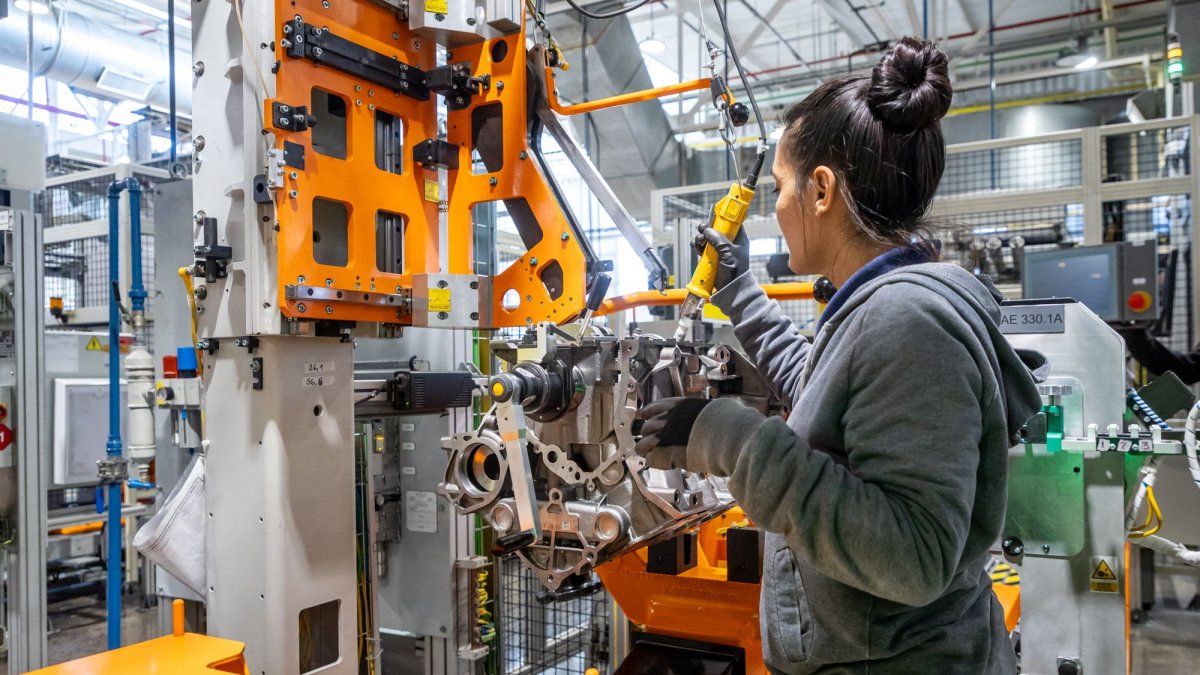In April, the industrial activity registered a 14.2% year-on-year drop, although it also showed a monthly rebound of 4.5%, compared to March, which was a month of very low performance. And, according to the Argentine Industrial Union (UIA), The data is explained by the greater number of business days and the normalization of specific issues that some sectors had gone through in March.
However, they highlighted that it was eleventh month of consecutive year-on-year decline and? the first quarter of 2024 accumulated a decrease of 12.4% yoy Likewise, the May data reflect that this trend persists. In fact, in the monthly series, a plateau or slight drop could be observed.
In fact, the Demand for electrical energy from Large Industrial Users fell significantly againno less than 11.3% a.y. And, in this framework, the report of the UIA It highlights that there were pronounced declines in the following sectors:
- Automotive (-27.9%),
- Cement Shipments (-27.1% yoy)
- patenting of agricultural machinery (-22.9% yoy)
Industry exports on the decline
As for the trade exchange with Brazila drop in imports of 42.8% yoy (April 2023 vs. April 2024) and a drop in exports of 3.9% for the same period.
On the other hand, the foreign exchange settlement (which grew during the first three months of the year) fell again and registered a decrease of 38% in one year (April/23l vs. the same month last year). This is due, in part, to the comparison base for the 2023 soybean dollar.
And, although they point out that the activity could be close to a floor, they warn that The industrial sector faces difficulties due to low demand, as well as cost increases. “It will be important that, to the extent that there is a recovery in the domestic market, it is not channeled solely into greater imports, but rather drives a recovery in local production and employment,” highlights the UIA.
The industry sectors that fell the most
The data showed a fall at the sectoral level, where the trend towards decrease in all the items that make up the index. The biggest falls were:
- in Non-metallic minerals (-34.1% yoy),
- sector Automotive (-21% yoy), where the decline was driven by a lower level of sales both to the domestic market (-52.6% yoy) and exports (-32.9% yoy)
- Metalworking (-19.5% yoy), which has accumulated eleven consecutive months of decline, with a fall in all areas
- Base metals (-16.7% yoy), affected by steel production (-26.3% yoy) while aluminum production grew compared to April of last year (+5% yoy).
- Substances and chemicals fell again year-on-year to (-12.2%), with drops in all the products that make up the indicator
- In it CIQyP segment The drop in intermediate petrochemicals (-33%) and plastic raw materials and synthetic rubber (-14% yoy) stands out.
- The production of Food and drinks (-4.2% yoy), whose fall slowed down due to the increase in oil production (+27.2%).
- The Paper and cardboard production fell year-on-year (-3.8% yoy).
The activity data was in line with that of the Industrial Performance Monitor (MDI index), which advances the industrial activity cycle. In April, it was again below 50 (contraction levels) for the eighth consecutive time. It stood at 35.5, representing a year-on-year drop of -4.9 pp
Industry in crisis: falls in production, sales, exports and employment
He 53% of companies had drops in production, 60% in sales, 37% in exports and 24% drops in employment. This shows a worse scenario compared to the same month last year.
It should be noted that, in employment, companies with a decrease in their staff increased to the highest value in the series (since 2021).
In this context, tocompanies with difficulties in meeting their payments increased. 12% of the companies surveyed had problems fully meeting all their obligations (salaries, suppliers, financial commitments, public service rates and taxes), the highest value in the series. The biggest arrears were in the tax area.
Finally, Companies considered that their economic situation is worse than a year ago. This was observed in the perceptions about the company itself (58.4%), in the situation of the activity sector (77.2%) and the country (67.2%).
Likewise, a improvement in expectations for a year from now: 62.1% of companies expect the economic situation of their company to improve in the next year, while 68.3% expect an improvement in the country’s situation.
The results emerge from a survey carried out on more than 1,200 companies throughout the first half of May.
Source: Ambito




